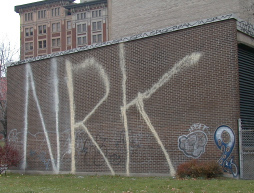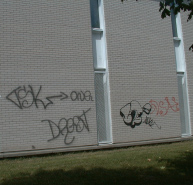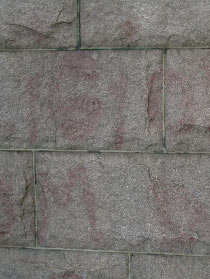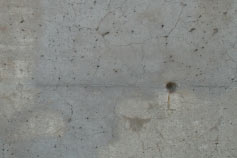|
|
|
|
 |
 |
 |
Graffiti > GRAFTEX |
 |
Introduction
 |
|
|
Paintings, signs and messages on walls are not a recent phenomenon.
These more or less prestigious activities can be found as far back
as the appearance of prehistoric man. This manifestation of the
artistic spirit has sadly found its way onto our public works and
property with messages as diverse as they are unsightly. |
 |
| Until recently, graffiti was found almost exclusively
in very specific locations, such as, universities, industrial sites
and underpasses. Such graffiti becomes more prevalent in times of
political or social uprising. |
 |
Today, this phenomenon is quickly getting out of hand - to the point
that no potential canvas is spared.
Be it on private or public buildings, prestigious dwelling or simple
cottage, or even an historical monument, this form of vandalism is
unacceptable. And today, it sees us deploying even greater efforts
in cleaning and restoring our walls and facades in a bid to beautify
our buildings and, of course, our cities. |
 |
| No in-depth social analysis is needed to see that the proliferation
of these acts of vandalism are largely due to the availability of
various mediums used such as spray paint, markers, etc… |
|

|
Stains and graffiti are most often comprised of paint or marker
ink. Such offending materials are compositions of dyes or pigments
and organic solvents with a binding agent.
Applied to non-porous materials such as glass and aluminum siding,
these products form a film that hardens after evaporation of the
solvents and is easily removed by simply dissolving the bonding
agent with the appropriate solvent.
The offending materials have deeper penetration levels on materials
generally used in construction such as brick, stone or cement which
have a more or less rugged texture and greater porosity.
|
By not limiting itself to a superficial film, the deposit penetrates
into the façade, thus impeding the ability of solvents to completely
eliminate all traces of graffiti without additional sand blasting. |
 |
 |
In some cases, solvents can actually worsen the situation by causing
a migration of the pigments even deeper into the material. This augments
the material’s porosity that leads to an even greater vulnerability
to future staining and thus, a greater difficulty in bringing it back
to its original state. |
|
|
|